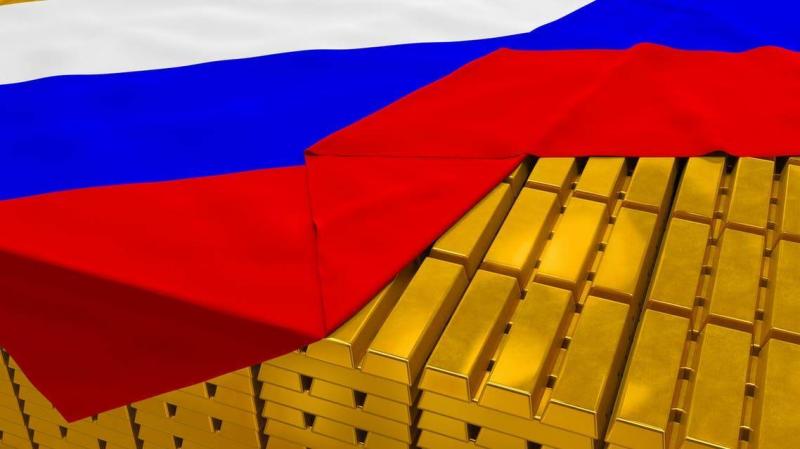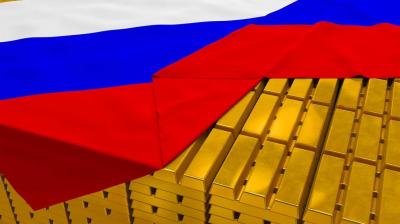The Central Bank of Russia built a massive reserve of assets and foreign currencies aimed at maintaining currency stability amid market panic. The Financial Times revealed the components of Russia's reserve, valued at $630 billion at the end of January, which consists of assets and deposits denominated in the world’s major currencies (the dollar, euro, pound sterling, and yuan), along with nearly 2,300 tons of gold. The sanctions imposed by the United States, the European Union, and the United Kingdom on the central bank are likely to render the vast majority, if not all, of these reserves useless.
Experts have expressed doubts about Russia's ability to utilize any of these reserves, as they are largely not under the Russian central bank's control or located in its vaults. This is particularly true for the high-value components of the reserves, especially securities and foreign currencies worth over $463 billion, of which $311 billion is in foreign securities held by custodians outside Russia.
Ousmane Manding, a visiting fellow at the London School of Economics and Political Science, explained how the Russian central bank could convert securities into cash if it needed quick access to dollars or euros, and the difficulty of this process after sanctions have been imposed, as noted by the Financial Times, which "Al Arabiya.net" has reviewed. Manding stressed that central banks typically do not keep their foreign currency reserves at their own institutions, and that securities and cash generally do not move freely. Instead, all operations on the assets are handled through external intermediaries.
He cited an example regarding the liquidating of Russian securities. Central banks typically ask their intermediaries to sell the relevant asset, such as German government bonds. The brokerage in Frankfurt would contact other brokers to announce the sale, and once a price is agreed upon, the custodian of the securities would be instructed to transfer ownership to the buyer or group of buyers.
The custodian for the buyer would then transfer the value of the securities to the seller's account at the brokerage. The proceeds can subsequently be used to instruct brokers or foreign exchange traders, most of whom are based in London, to purchase rubles at a specified price. Usually, the seller is a Russian commercial bank, and after the purchase is completed, the Central Bank of Russia would direct its custodian bank to credit the seller's account in euros.
Thus, halting the central bank's ability to use its securities to stabilize the ruble requires instructing the financial intermediaries in this chain—brokers, custodians, central counterparty banks, foreign exchange traders, and central custodians—to set aside these assets in preparation for sale on behalf of the central bank. As long as any of these parties are outside Russia and from countries that have signed sanctions against its financial system, converting these assets into liquidity becomes almost impossible.
In recent years, Washington has often bolstered its foreign policy through what is referred to as "weaponizing finance". In practical terms, this means using the global dominance of the dollar to cut off monetary authorities in Iran, Venezuela, and Afghanistan from accessing their reserves. U.S. authorities have often relied on anti-terrorism and human rights legislation in addition to the U.S. International Economic Emergency Powers Act, which has proven particularly effective in preventing sanctioned central banks from accessing their foreign assets.
The most direct way to punish the Central Bank of Russia is by placing it on the so-called SDN list of individuals and entities that prohibits U.S. entities from dealing with them.
**Currency and Deposits**
The second part of the reserves held by the Central Bank of Russia is in the form of currency and deposits, totaling $152 billion. Of this $152 billion, around two-thirds is held in official international institutions, including other central banks, the Bank for International Settlements, and the International Monetary Fund. Central banks in the Eurozone, where the Russian central bank holds about a quarter of its assets, have already frozen its accounts. The European Central Bank stated that it would implement all sanctions decided by the European Union and European governments. In turn, the President of the Bundesbank, Joachim Nagel, welcomed the imposition of comprehensive financial sanctions on Russia.
The Bank for International Settlements confirmed in a statement: "Our policy is that the institution does not recognize or discuss banking relationships. The BIS will follow the sanctions." It remains unclear how other authorities, especially China, will act. According to the Russian central bank’s annual report, 14% of its foreign currency reserves are in China, the largest single-country share. Nearly 13% of the reserves are in yuan or assets denominated in yuan. Manding indicated that China might offer alternatives for Russia to continue trading with at least some parts of the world, stating, "Russia may accept payments for its exports in yuan and increase imports paid for in Chinese currency, whether from China or other countries that accept yuan. Since yuan-based payments are likely to be made by institutions outside the direct influence of the West, this could succeed."
The remaining third of the deposits of the Russian central bank is kept in private banks, making it impossible to determine how much of the $57 billion is held in the United States, the United Kingdom, or the European Union. However, since nearly 60% of the Russian central bank's reserves are either in dollars, euros, or pounds sterling, it is fair to speculate that it is more than half.
**Gold Reserves**
The Russian central bank holds the fifth-largest gold reserve in the world, according to the World Gold Council. According to its annual report, the gold bullion, valued at $130 billion, is fully stored in vaults within the Russian Federation, which is unusual globally, as most central banks around the world tend to keep their gold reserves either in London or New York to ensure proximity to financial markets for easier sale.
Experts believe that holding gold in Russia rather than in London or New York complicates the central bank's ability to act on large quantities if necessary. At the same time, being close to home makes it very difficult for the United States, the United Kingdom, and the European Union to successfully impose sanctions on Russian bullion.




